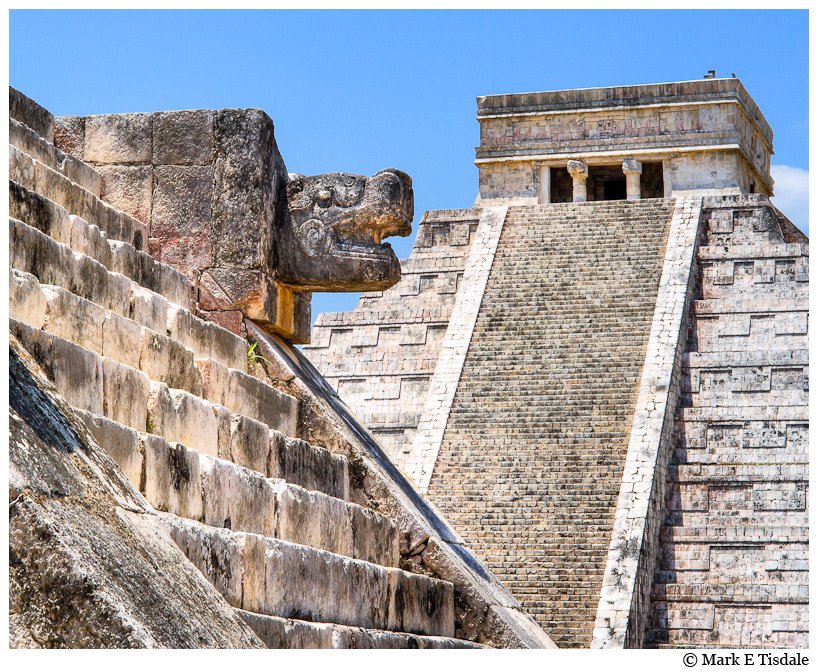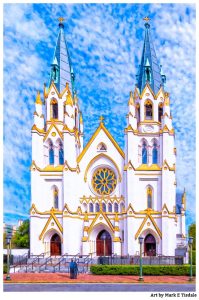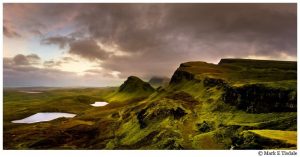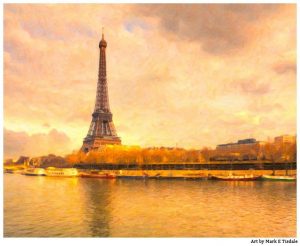Chichen Itza Scenes
It’s been a couple of years since I visited Chichen Itza. At the time, I spent a week in Mérida, the capital of the Yucatan taking day trips out to see the sights, including possibly the most well known of the Maya ruins. Many Americans visiting Cancun will take a tour to see these ruins and learn about the Maya.
The topography and soil of the Yucatan causes the formation of cenotes, large open pits where underground water is easily accessible. In fact, as there aren’t surface rivers, these were the main source of water for the Maya. It’s not surprising that the ancient Maya built their cities around these cenotes, which they considered magical and gateways to the afterlife. Chichen Itza or, Chich’en Itzá in Maya, translates basically as ‘at the mouth of the well of the Itza.’ The Itza were a particular group of the Maya. This is apparently not the first name of Chichen Itza but there’s a lack of consensus on what the first name was.
Just like our cities, the Maya cities were not built at once, they are built, torn down, and built again, inhabited by successions of people with different tastes and beliefs over the centuries. Chichen Itza was at its peak from roughly 600 AD to 1,000 AD. It was sacked and the focus moved to Mayapan sometime between 1,000 and 1,200, but even by the time the Spanish arrived, there were still people living there and making pilgrimages to the centotes. So, when we look at these ruins, we’re looking at around 1,000 years of human habitation but primarily with the buildings of the last of its prosperous times.

This picture is of El Castillo, the main pyramid at Chichen Itza. This temple to Kukulcan was built on top of an earlier temple to Chac Mool, the rain god. The earlier temple has been excavated and was once open to the public but has been closed for some time now. The later temple shows Toltec influences. In fact, Kukulcan is the Maya version of the Toltec god, Quetzalcoatl. There are stories of the arrival of a Toltec king around 987 who set up a new court at Chichen Itza. If true, it’s possible this explains the cultural influence. It’s hard to look at these photos of the ruins without thinking of the culture that flourished and vanished here so long ago. The craftsmanship of their cities is amazing.

This is a close up photo of the top of the pyramid of Kukulcan. It was been restored by the Mexican Government in the 1920’s and 30’s and restoration activities continue at the site today. Still, we have not restored these temples to their original appearance. The buildings were not originally the bare stone pictured but were plastered and were likely painted very colorfully. Even in their muted forms, these buildings still speak to us of a talented and creative people. The light in this photo and the clouds that formed by late afternoon while I was there are really special!
Chichen Itza is UNESCO World Heritage site.
If you enjoyed these photos of Chichen Itza, there are more pictures in my print gallery









in the ‘el castillo steps’ photo… the cloud above the temple looks like a skull and crossbones to me 🙂
I can KIND of see the crossbones, but I have to admit to never catching shapes in the cloud without someone else first suggesting it. It would definitely add to that imposing feel I was going for! Thanks 🙂